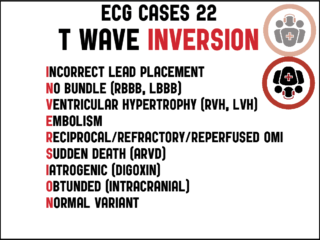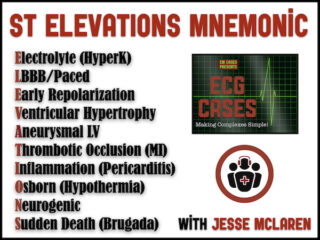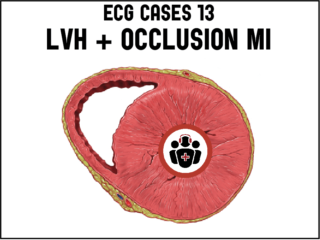ECG Cases 22: T-wave INVERSION mnemonic
The differential for T-wave INVERSION includes: Incorrect lead placement, No bundle (RBBB, LBBB), Ventricular hypertrophy (LVH, RVH), Embolism, Reciprocal/refractory/reperfused occlusion MI, Sudden death (ARVD), Iatrogenic (digoxin), Obtunded (eg SAH), and Normal variant. Jesse McLaren runs through 10 cases of patients who present to the ED who have T-wave inversions on their ECGs...










